March of the Red-tailed Bugs
Sunday, August 5, 2007
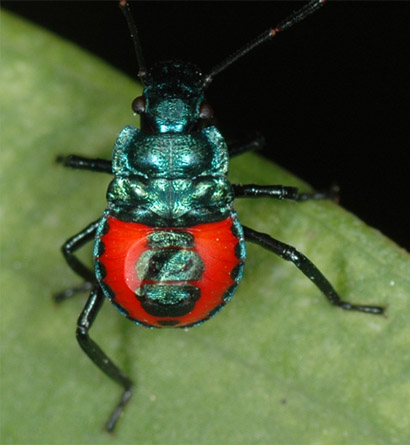 | Now why, pray tell, would anyone be concerned about the behavior of a red-tailed bug? Well, I dunno, but there were lots of them doing some rather unusual things. And it was an excuse to stop work for a few minutes and watch them. And I don't remember seeing any just like them before - certainly not marching in formation. And I do have a tendency toward "small-game hunting" with the camera. |
We were transplanting hostas that I had dug up at Aunt Dorothy Watts' house. The thing that caught my attention was this small army of red specks marching toward the tip of one of the hosta leaves. 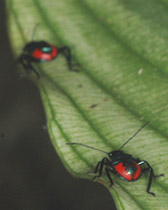 | 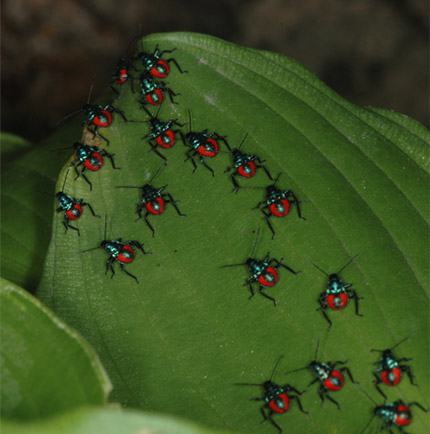 |
 | The little rascals were only about half a centimeter long, and I might not have noticed if there hadn't been so many of them. My first impression was that they were tiny roach-type bugs, but they appear to be hard-shelled beetles. |
When the group reached the leaf tip, they would peer over the edge and then turn and march back to the stem and up to another leaf to repeat the process. There were always some individuals going the wrong way, so it was a march only in an average sense, with a "group velocity" heading in one direction. | 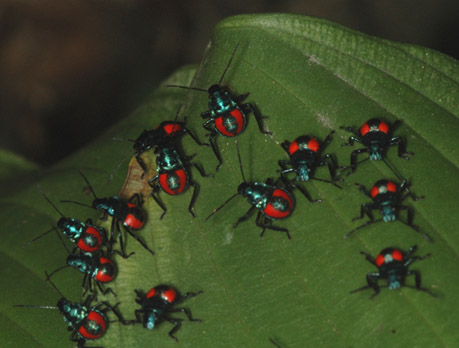 |
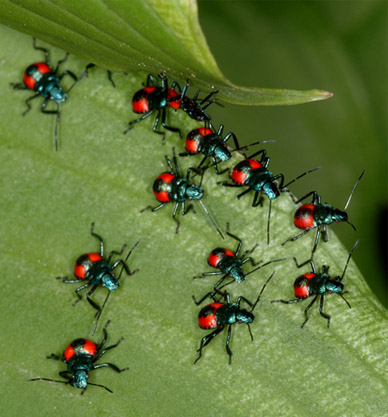 | 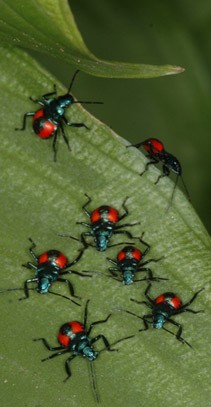 |
On the next leaf up, the lead group follows the edge of the leaf and then fans out toward the tip.
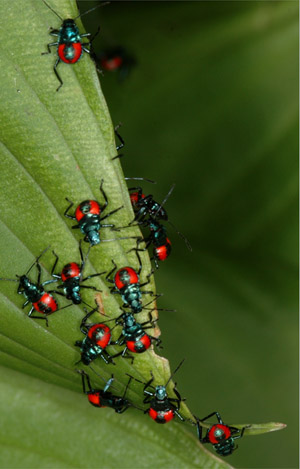 |  |
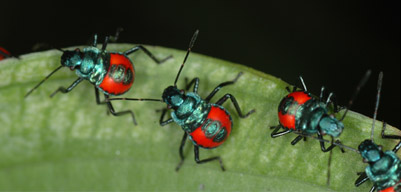 | 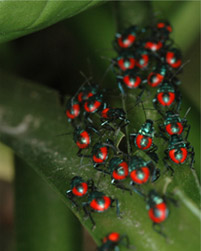 |
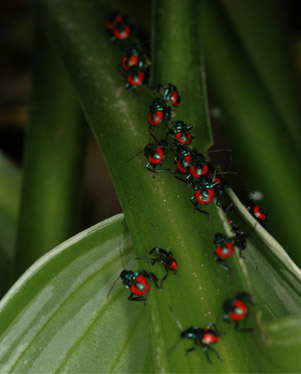 | 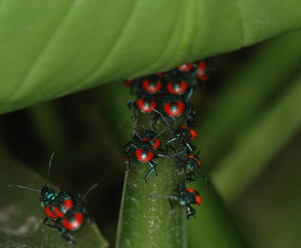 As this colorful army makes its way up the stem, it is time for me to say goodbye to them and get back to planting hostas. My whole observation of them had been about 7 minutes according to the camera's clock. |
I found this identified as a "Florida predatory stink bug" or Euthyrhynchus floridanus if you want the Latin. It is also a "featured creature" on the University of Florida site. This is a rather thorough reference. Some of the information from the site "The predatory stink bug, Euthyrhynchus floridanus (Linnaeus), is considered a beneficial insect because most of its prey consists of plant-damaging bugs, beetles, and caterpillars. This stink bug is primarily a Neotropical species that ranges into southeastern quarter of the United States."
From the information on the University of Florida site it appears that these are "4th instar nymphs", possibly fifth, but at least they are immature individuals of the species. The adult shown at right has yellow triangular patterns on its back. |
 U. Fla. image |
| Yellow Swallowtail |
2007